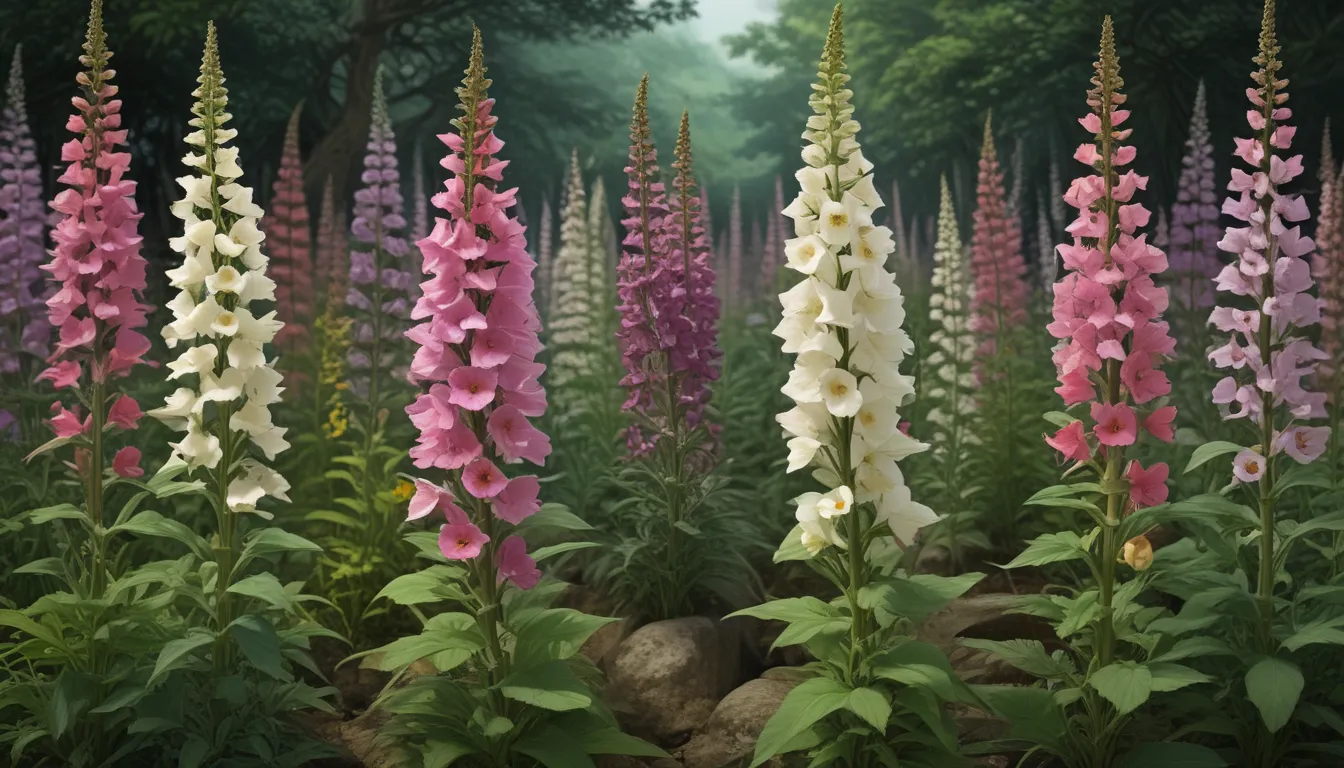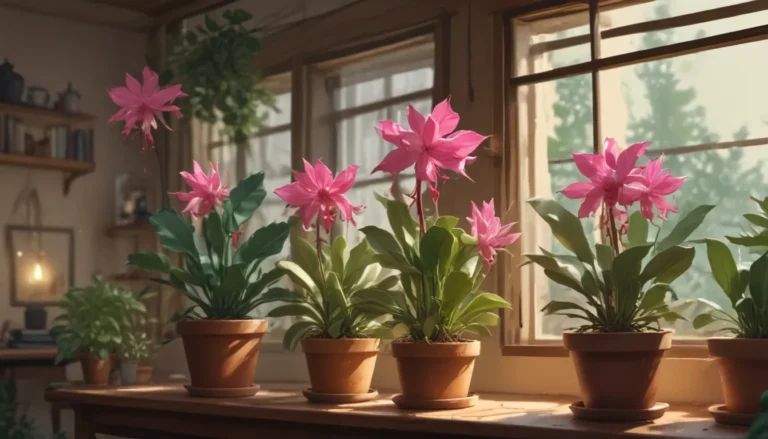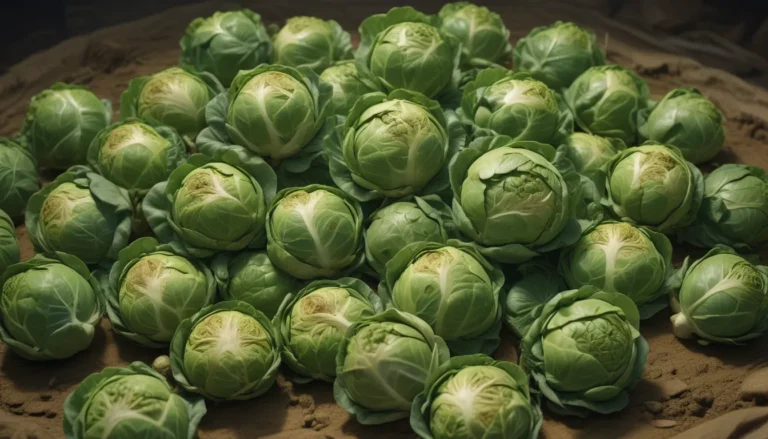How to Grow and Care for Common Foxglove: A Comprehensive Guide

Digitalis purpurea
Are you looking to add a touch of elegance and charm to your garden? Look no further than the purple foxglove, also known as Digitalis purpurea, common foxglove, or lady’s glove. This biennial plant boasts tall flower stalks adorned with tubular, downward-facing blossoms in a variety of colors such as cream, pink, purple, red, yellow, and white. Let’s delve into the world of common foxglove and discover how you can grow and care for this stunning plant in your garden.
What You’ll Learn
- Cultivation and History
- Propagation
- How to Grow
- Growing Tips
- Maintenance
- Cultivars to Select
- Managing Pests and Disease
- Best Uses
- Quick Reference Growing Guide
Cultivation and History
In the year 1755, English doctor William Withering stumbled upon the medicinal properties of the common foxglove while treating a patient with a heart condition. What started as a folk remedy soon evolved into the introduction of digitalis, a drug used to treat heart ailments. This plant that was once a part of traditional medicine has now become a cornerstone in modern healthcare.
A Note of Caution:
It’s essential to remember that all parts of the foxglove plant are poisonous. While it has beneficial medicinal uses when used by professionals, ingesting this plant can have severe consequences for both humans and pets. It’s best to appreciate the beauty of the plant from a safe distance.
When it comes to cultivation, the common foxglove thrives as a biennial in USDA Hardiness Zones 4 to 9, and as an annual in all temperate zones. Whether as a short-lived perennial wildflower in coastal regions of the Pacific Northwest or a biennial attracting nectar-seeking pollinators in your garden, the common foxglove is a versatile plant that can add charm to any landscape.
Foxglove Plant Propagation
If you’re looking to grow common foxglove in your garden, you have two primary options for propagation: seeds or nursery plants.
From Seed
Starting from seed gives you the opportunity to witness the entire growth cycle of the plant. You can either purchase seeds or collect them from existing plants. Directly sow the seeds in your garden after the last spring frost, ensuring they receive ample light to germinate. Alternatively, start seeds indoors six weeks before transplanting them outdoors to give them a head start.
From Nursery Starts or Transplants
Opting for nursery plants provides a more predictable outcome in terms of plant characteristics. When transplanting nursery plants, ensure that the soil level matches the pot soil level to reduce transplant stress. Remember that cultivated varieties may behave differently, with some blooming in the first year and others blooming in the second year after experiencing winter chill.
How to Grow Foxglove Flowers
Now that you have your seeds or nursery plants ready, it’s time to plant them in a suitable location.
- Select a spot with morning sun and afternoon shade.
- Ensure the soil is organically rich and well-draining.
- Maintain even moisture throughout the growing season.
- Space plants 12 to 18 inches apart to promote air circulation.
- Provide slightly acidic soil with a pH of 5.5 to 6.5.
Growing Tips
To ensure your common foxglove thrives, here are some essential growing tips to keep in mind:
- Provide slightly acidic soil that is organically rich and drains well.
- Do not cover the tiny seeds; they need light to germinate.
- Space plants 12 to 18 inches apart to maintain good airflow.
Maintenance
To keep your common foxglove in optimal condition, regular maintenance is key. Staking may be necessary for taller stalks, and deadheading spent stems can promote continuous blooming. Proper watering, mulching, and occasional fertilizer application can help your plants stay healthy and vibrant.
When it comes to fertilizing, a well-balanced fertilizer like a 5-10-5 blend in the second year can provide the necessary nutrients for robust growth. However, if you have organically rich soil, additional fertilizer may not be required.
Remember to avoid overwatering, especially in cooler regions where biennials may be sensitive to damp conditions. Good drainage is essential to prevent root rot and ensure the longevity of your plants.
Foxglove Cultivars to Select
Choosing the right cultivar can enhance the beauty of your common foxglove plants. Some popular options include ‘Pam’s Choice’ and ‘Rose Shades’, each offering unique colors and characteristics that can complement your garden design.
Pam’s Choice
- Features white flowers with burgundy-splashed throats.
- Ideally suited to Zones 5 to 9 with a mature height of 48 inches.
- Blooms in spring and summer in full sun to part shade locations.
Rose Shades
- Offers rose and white blossom spikes for a two-tone display.
- Suitable for Zones 4 to 8 with a mature height of 30 inches.
- Blooms in spring and summer in part shade to sun placements.
In addition to these cultivars, you may also encounter hybrids like Merton’s foxglove (Digitalis × mertonensis) and Digiplexis® that offer unique characteristics and bloom times. Choose cultivars that best suit your garden environment and design preferences.
Managing Pests and Disease
To ensure the health of your common foxglove plants, it’s essential to manage pests and disease effectively. Using high-quality garden supplies, maintaining cleanliness, and providing proper spacing between plants can help prevent common issues like crown rot, leaf spot, and powdery mildew.
Additionally, creating a habitat that encourages beneficial insects while deterring harmful pests can contribute to the overall well-being of your garden. Regular monitoring, handpicking pests, and using natural remedies like neem oil or insecticidal soap can help address infestations without harming the environment.
Best Uses for Common Foxglove
The elegant stature and vibrant blossoms of the common foxglove make it a versatile plant for various garden settings. Whether used in foundation plantings, cottage gardens, cutting gardens, or woodland borders, this plant can elevate the visual appeal of any landscape.
Pairing foxgloves with companion plants that share similar growing conditions can create harmonious arrangements that draw attention to the unique characteristics of each species. Experiment with different combinations to create visually stunning displays that attract pollinators and provide year-round interest.
Quick Reference Growing Guide
- Plant Type: Herbaceous biennial
- Flower / Foliage Color: Cream, pink, purple, red, yellow, white / green
- Hardiness (USDA Zone): 4-9
- Bloom Time / Season: Late spring to summer
- Exposure: Part shade
- Spacing: 12-18 inches
- Height: 18-60 inches
- Spread: 12-18 inches
- Water Needs: Moderate
- Native to: Europe, Mediterranean, Canary Islands
By following these cultivation and care tips, you can successfully grow and maintain a thriving common foxglove garden in your backyard. Remember to exercise caution due to the plant’s toxic nature and enjoy the beauty and allure of these enchanting blossoms in a safe and responsible manner. Share your foxglove gardening experiences in the comments below and inspire fellow garden enthusiasts to embrace the elegance of this captivating plant!





